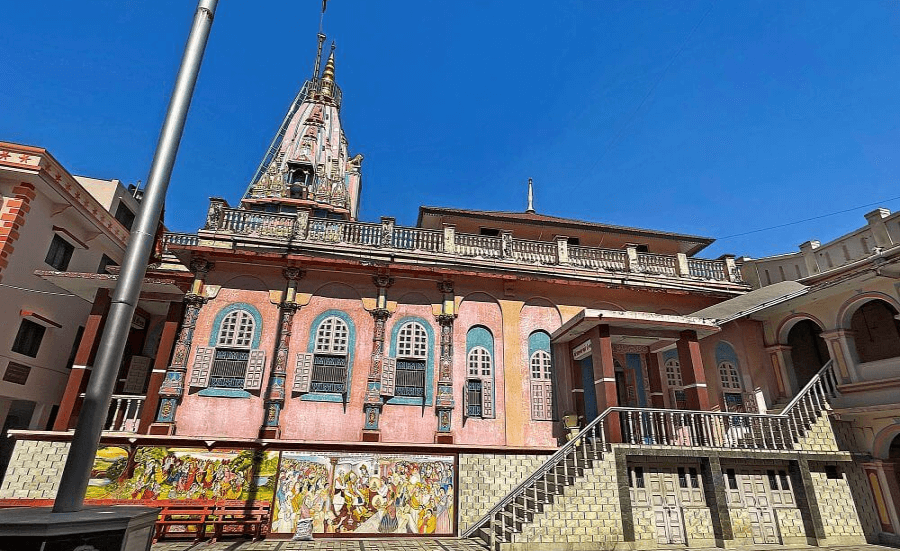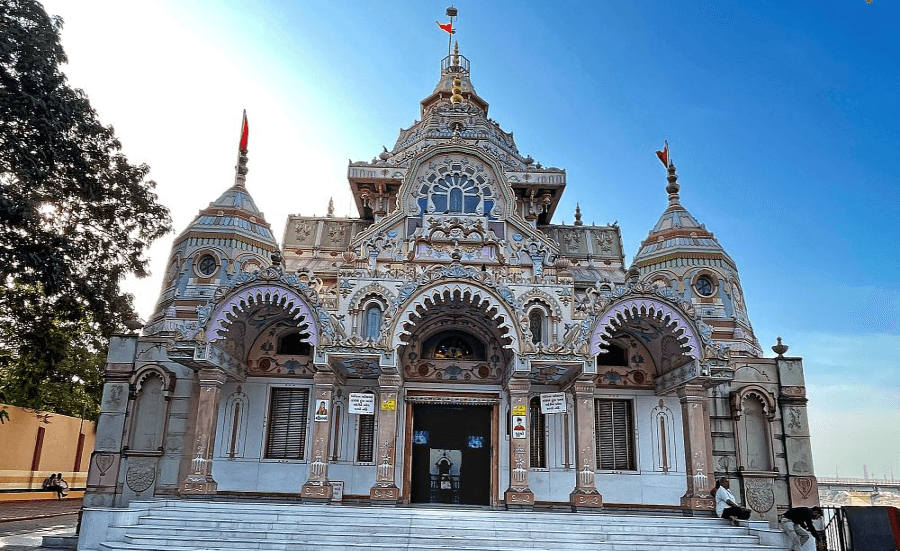
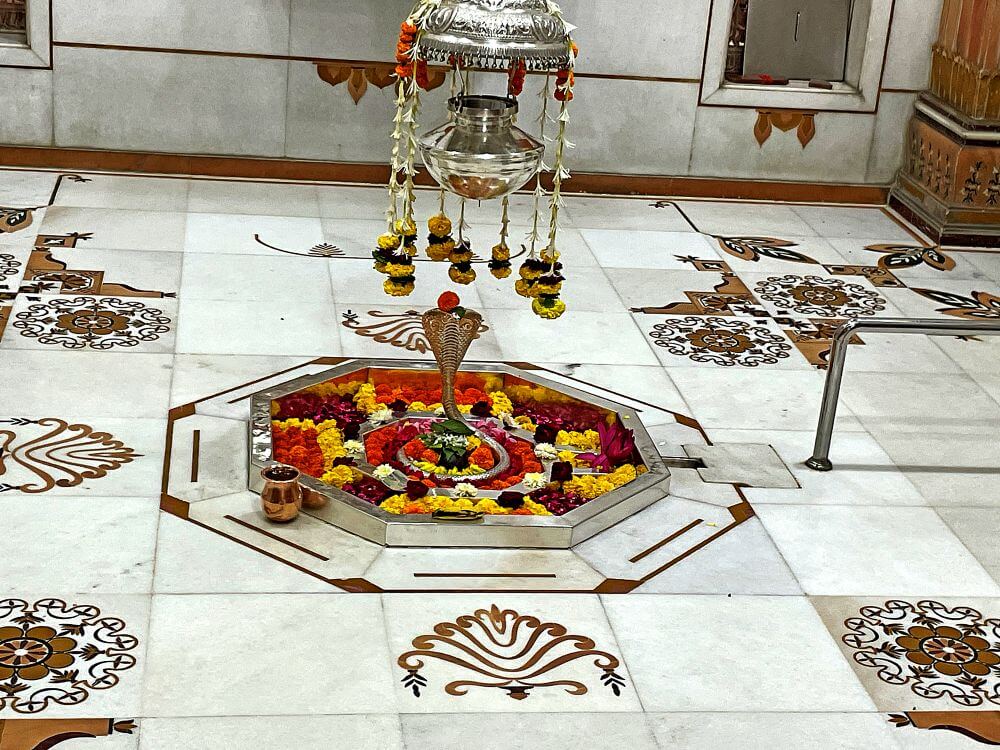 The Karmanath Mahadev Temple, located in Kapodra, Surat, is a historically significant and aesthetically striking temple known for its intricate architecture, vibrant colours, and unique carvings. Situated on the banks of the Tapi River, the temple is steeped in mythology and spiritual significance. According to legend, the sage Kardam Rishi established the Shivling here, and devotees believe that sincere worship at the temple fulfills all desires. This belief draws a daily crowd of devotees to the temple.
The Karmanath Mahadev Temple, located in Kapodra, Surat, is a historically significant and aesthetically striking temple known for its intricate architecture, vibrant colours, and unique carvings. Situated on the banks of the Tapi River, the temple is steeped in mythology and spiritual significance. According to legend, the sage Kardam Rishi established the Shivling here, and devotees believe that sincere worship at the temple fulfills all desires. This belief draws a daily crowd of devotees to the temple.
The temple’s origin is tied to the mythological story of Kardam Rishi, the son of Brahma. He was born from Brahma’s shadow. His marriage to Devahuti, the daughter of Sage Manu, was orchestrated by Brahma, the creator. Initially reluctant to marry, Kardam Rishi complied with Brahma’s wish but set a condition: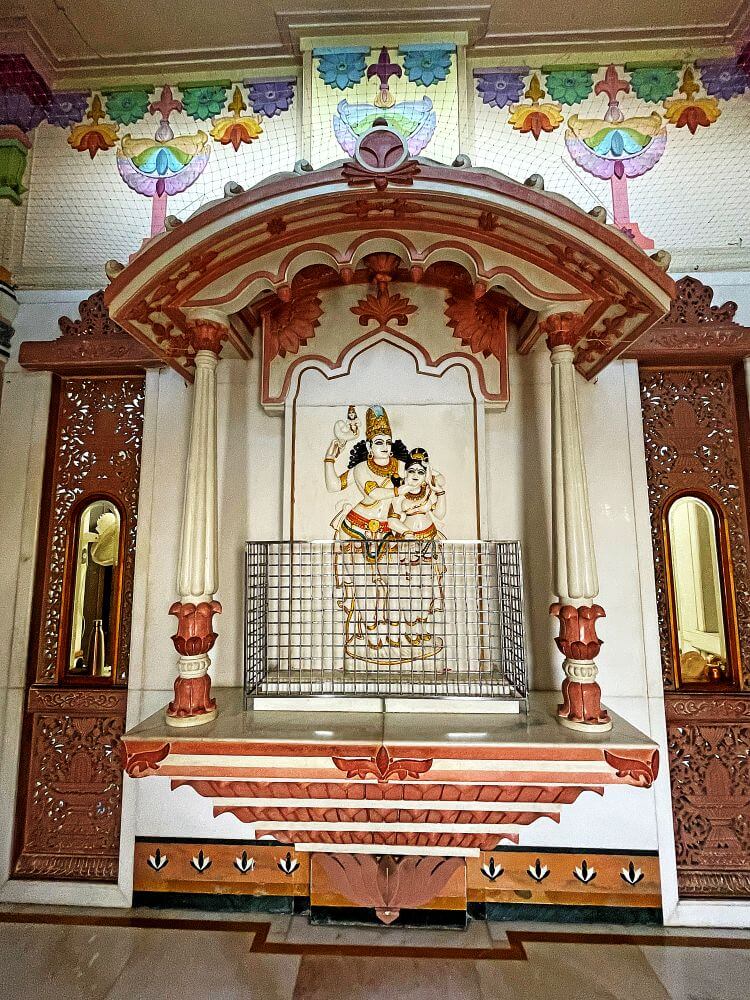 he would renounce worldly life after the birth of a son. Lord Vishnu blessed Kardam with a divine promise, saying, ‘I will incarnate as your son.’ With this assurance, Kardam Rishi, knowing Vishnu himself would be born as his son, felt no need to desire any other offspring.
he would renounce worldly life after the birth of a son. Lord Vishnu blessed Kardam with a divine promise, saying, ‘I will incarnate as your son.’ With this assurance, Kardam Rishi, knowing Vishnu himself would be born as his son, felt no need to desire any other offspring.
After their marriage, Kardam Rishi immersed himself in deep meditation, which lasted for 40 years. During this time, Devahuti performed her duties as a devoted wife, taking care of him selflessly. When Kardam Rishi finally opened his eyes after completing his meditation, he saw Devahuti looking aged and frail. Moved by her dedication, Kardam Rishi expressed his gratitude, saying, ‘I am pleased with your service. Close your eyes for a moment.’ When Devahuti reopened her eyes, she found herself transformed into a youthful princess and saw a magnificent palace in the middle of a serene lake.
The couple was later blessed with the birth of Kapila Rishi, an incarnation of Lord Vishnu, along with nine daughters. Kapila Rishi went on to become a revered sage and the proponent of Sankhya philosophy. The daughters—Kala, Anasuya, Shraddha, Havirbhu, Gati, Kriya, Khyaati, Arundhati, and Shanti—were married to sages such as Marichi, Atri, and Angiras. After fulfilling his duties, Kardam Rishi embarked on a pilgrimage and arrived at the banks of the Tapi River, where he established a Shivling and began meditating.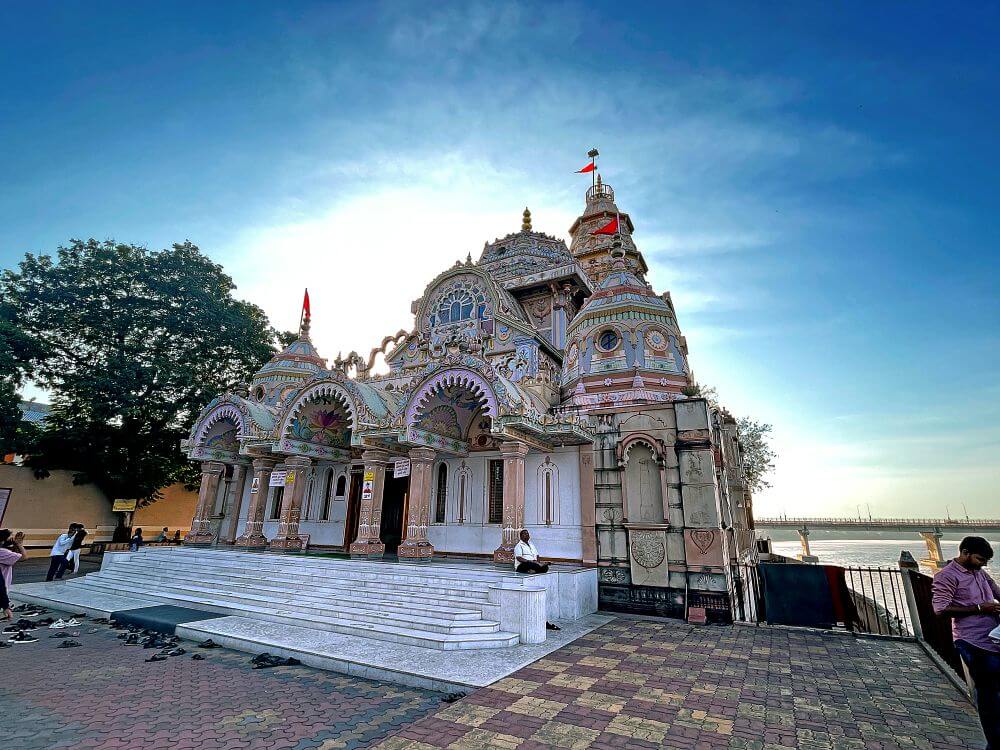 Over time, the name Kardamnath evolved into Karmanath.
Over time, the name Kardamnath evolved into Karmanath.
Previously surrounded by dense forests, the temple has been a site of meditation and penance for numerous saints. Over the years, the temple underwent three major renovations. The latest restoration, which began in 2007, utilized sandstone from Jaipur and Kota, Rajasthan, with skilled artisans brought from these regions. After a decade of work, the temple achieved its current grandeur.
The temple complex features an expansive courtyard paved with paver blocks and is adorned with numerous trees, creating a serene and inviting atmosphere. Upon entering through the grand main gateway, visitors are greeted by an ornate temple structure resembling a finely crafted jewel, crowned with a towering shikhara (temple spire).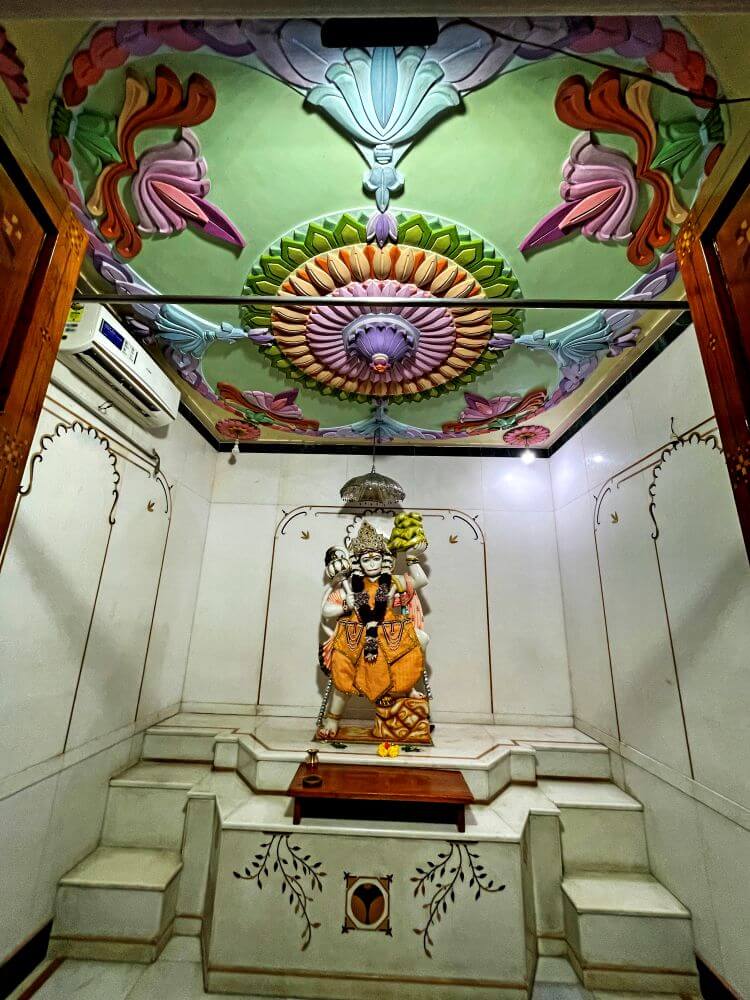 The temple’s exterior is intricately adorned with elaborate carvings and vibrant colours, enhancing its architectural splendour.
The temple’s exterior is intricately adorned with elaborate carvings and vibrant colours, enhancing its architectural splendour.
The temple’s layout includes a darshan mandap (viewing pavilion), a spacious sabha mandap (assembly hall), the garbhagriha (sanctum sanctorum), and a circumambulatory path (pradakshina marg). A defining characteristic of the temple is its exquisite carvings and detailed ornamentation, which captivate onlookers with their artistry. Key architectural highlights include the darshan mandap with its three domed and elephant-back-shaped roofs. On either side of the mandap, there are octagonal turrets resembling small towers, each featuring rounded arches. The sabha mandap is crowned by semi-circular domes, with sloping roofs on either side that taper elegantly. The main shikhara over the garbhagriha transitions from a square base to an octagonal pinnacle, complemented by numerous small niches housing sculpted deities. The arched doorways of the sabha mandap, along with the uneven heights of its exterior walls and the garbhagriha, create a dynamic and visually appealing silhouette.
Inside, the sabhamandap impresses with its high ceiling, ornate square pillars, and vibrant stained glass windows that filter colourful light into the space. On the left is an idol of Ganesha, while on the right is an idol of Hanuman.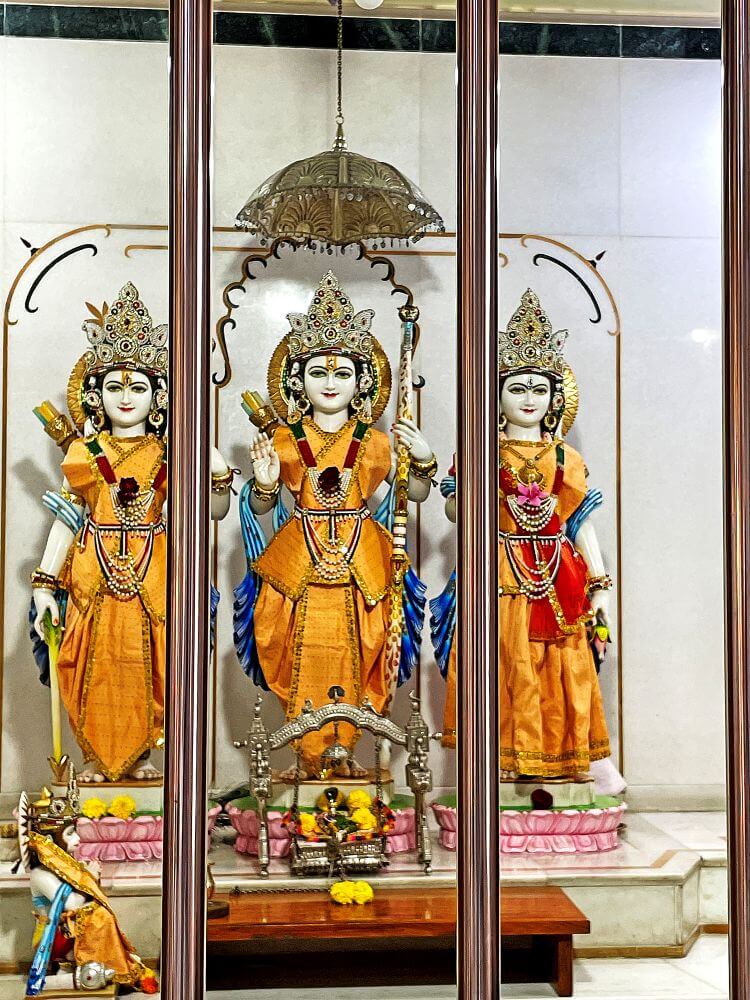 Statues of Amba Mata and Ram-Lakshman-Sita are also housed in the mandap.
Statues of Amba Mata and Ram-Lakshman-Sita are also housed in the mandap.
The sanctum features a marble Nandi idol encased in a glass box, with a tortoise statue in front. At its centre is an octagonal recess where the Shivling is installed. A silver snake canopy and a silver ceremonial vessel for ablutions (abhisheka) adorn the Shivling. Daily floral decorations enhance its beauty. Niches within the sanctum house idols of Parvati, Tapi Mata and Panchanan. The sanctum is surrounded by a circumambulatory path, and its outer walls are adorned with sculptures of Parvati holding lotus flowers, Shiva in a dancing pose, and other intricate carvings.
The temple is open for darshan from 6:00 AM to 12:00 PM and 3:00 PM to 7:00 PM. Daily rituals include morning and evening aarti, with offerings of flowers and ablution ceremonies. Festivals such as Mahashivaratri and the temple’s anniversary celebration on Shravan Shashti are observed with great enthusiasm, featuring rituals such as abhisheka, laghurudra, and havan. The temple also celebrates the month of Shravan with daily religious events.
With its profound spiritual significance and stunning architecture, the Karmanath Mahadev Temple stands as a beacon of devotion and cultural heritage in Surat.
